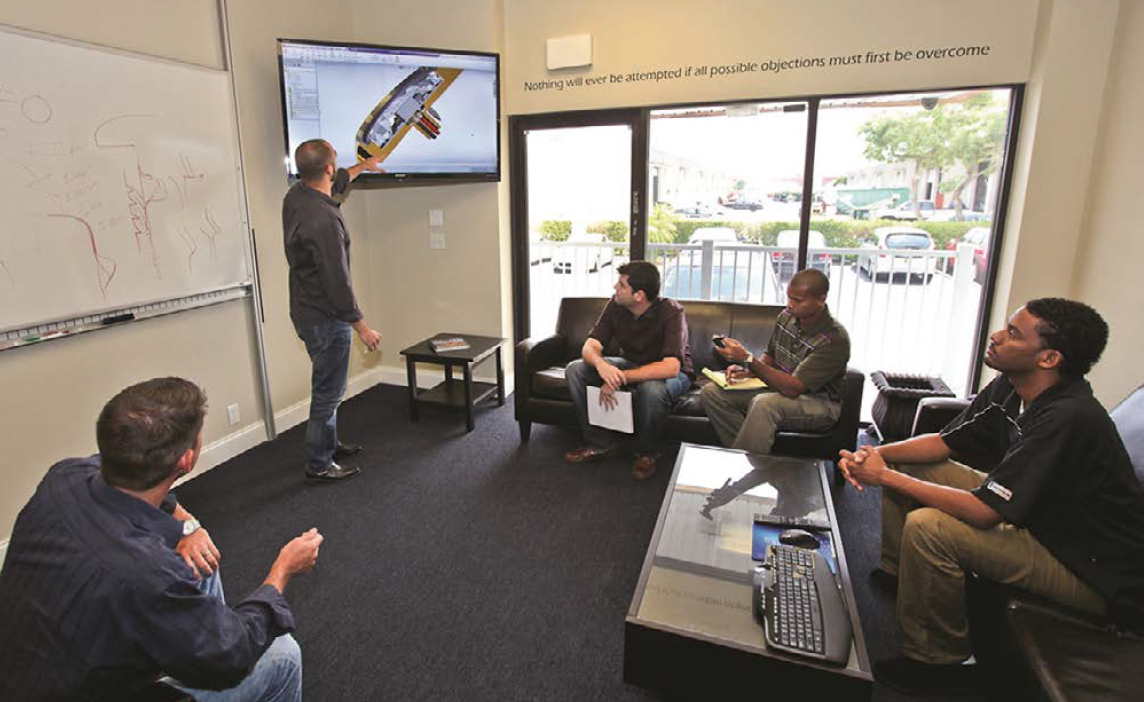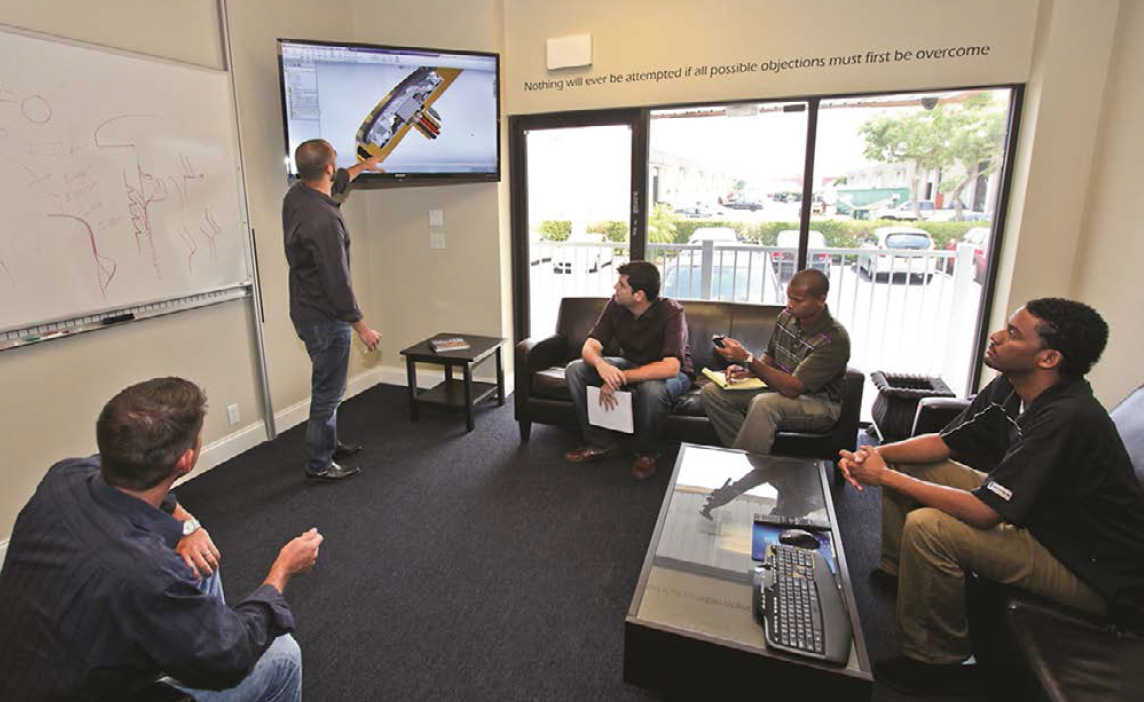Concept of a Time-Proven LED Luminaire Design and Manufacturing Process by Lumitec Lighting
While doing successful business has always been a tough job, it has become even tougher with the introduction of solid-state technology into the lighting industry. Besides high quality criteria, time to market has become a crucial success factor. Innovative processes and tools and, last but not least, a talented and inspired team are necessary. Angela Betancourt presents an approved process used by Lumitec Lighting.
The LED lighting industry is advancing across a variety of platforms. New technologies make it possible for manufacturers to create products suitable for numerous applications. The process of developing and manufacturing LED products has evolved allowing for faster product development and market introduction. Taking an idea and transforming it into a high quality finished product can be done with increased accuracy with the use of machines, prototype tools, and sophisticated computer software.
Introduction
LED lighting technology allows for any specific niche with the vast LED lighting segment to use these resources to their advantage. In the marine LED lighting segment, for example, where products need to be made to withstand a harsh environment, companies like Lumitec rely on their talent and specific tools to conceptualize and manufacture a quality durable product.
Bringing products to market quickly and often is critical to being successful and gaining market share. There are five general phases to this process: idea, design, prototype, production/ manufacturing, final product, and packaging.
It begins with an idea that can come from several places of inspiration such as customer feedback, technological improvement, team insight, or personal reference. The customer is a great place from which to draw inspiration for a new product or an improvement to a product. Is there a specific product selling better than others? What has been their feedback? What have they asked for? New ideas can originate by answering these questions. Another place from which to draw new product ideas is within the team.
Generating Ideas
Nearly everyone on the engineering team at Lumitec, a manufacturer of extreme LED lighting solutions, is a boater and the company outings frequently involve fishing or cruising on the company’s 63 foot Bertram Sportfish. Playing the role of the customer creates an environment for fresh ideas to develop. What would make a current product better than it already is? What if this light were a different color, size, shape, or waterproof?
Defining the Product
Once the idea is generated it’s important to ask what the main function of the light will be. Will it fulfill a specific need or is it just a cool idea? Will there be demand for the product? What problem does it solve? What will it cost to bring this product to market? Thinking about the SWOT analysis is as applicable in any business as it is in the development of LED lighting. Understanding the lights purpose will determine whether it’s worth using resources for. What is the financial impact? What is the realistic time it will take to execute this idea to completion? Is now the right time? If it feels right move forward; don’t get stuck with analysis paralysis. The next phase is design. Figure 1: Thorough analysis and evaluation of the mechanical design is done during group meetings. Possible improvements, changes addition or removal of features are discussed
Figure 1: Thorough analysis and evaluation of the mechanical design is done during group meetings. Possible improvements, changes addition or removal of features are discussed
Mechanical Design
Designing a visual model of this product can be done using CAD programs or CAE programs. This form of industrial art makes a 2D or 3D computer model that brings the feasibility of the product to life. During this phase, modifications can be made and documented based on engineering analysis; creating a clear layout for the development of the product. This phase is also an opportunity to compare competitive product features and implement or remove a particular aspect that might not evolve into a practical application.
 Figure 2: Rapid prototyping equipment like professional 3D printers occasion high initial costs, but allow early evaluation of the design and provide a good ROI due to time savings
Figure 2: Rapid prototyping equipment like professional 3D printers occasion high initial costs, but allow early evaluation of the design and provide a good ROI due to time savings
Prototyping
Following the design phase, the prototyping stage begins. Technology has taken prototyping to new levels. The Mojo 3D printer from Stratasys is an example. Used correctly it can be an invaluable tool that saves days, or even weeks that would have normally been used by more traditional manufacturing methods. While the initial cost of the printer is high for a small company, the ROI due to time savings and other factors can quickly add up. This is the optimal time to make changes and adjustments.
3D printing makes it possible to physically hold an early stage version of the light. If something is wrong in the design it can be fixed. Whereas in the past, valuable materials and resources had to be used, and sometimes wasted if things went wrong. Another costly but good investment is in tooling for injection molds or castings. Having these tools on premise reduces time and allows for a faster turnaround.
Electronics Design
While the lights’ physical appearances are being tweaked and the final casing designed, the lights’ electrical components should also be created. The circuit design can be based on microprocessor technology. Lumitec, for example, uses proprietary control software to ensure reliability. Testing the circuitry against widely accepted military and/or industrial standards is important for a product that needs to withstand challenging environments. Tests can include, EMI, transient voltage, under and over voltage.
Optical Design
The process for the optical design should follow a comparative level of testing. Using an integrating sphere is the optimal way to test overall luminous efficiency and lumen output. The calibrated and NIST-traceable equipment is one of the most sophisticated light measurement devices. Besides that, more detailed information on beam pattern and light color consistency need to be evaluated. Different methods and measurement tools like spectro-goniometers can be applied. A proprietary approach consisting of a set of cameras in combination with complex image-processing software has been developed in-house to satisfy the company’s stringent criteria. The tool uses an array of specially calibrated cameras to capture images of a luminaire in a carefully-controlled environment. A powerful workstation then analyzes more than 20 million data points to help engineers refine and optimize optical systems. While presenting an overwhelming amount of information, it will produce accurate results. This is another expensive investment, but worth having on site for convenient accessibility.
For standard comparisons, there are organizations such as the Illuminating Engineering Society of North America (IESNA) that have developed tests to measure various LED lighting components like the lifespan for LED lighting products. This can serve as a general benchmark for comparisons, dependant on the specific niche the LED light is being developed for.
 Figure 3: Underwater lights belong to the most strained products that have to withstand a very harsh environment. Therefore quality requirements are very high and painstaking testing has to be performed
Figure 3: Underwater lights belong to the most strained products that have to withstand a very harsh environment. Therefore quality requirements are very high and painstaking testing has to be performed
Preparation for Production
With the physical design, electrical configuration, and optical testing completed, the product is ready to be produced for market. A process that ensures consistency for each and every product is imperative. Every product needs to be tested in extreme situations similar to those it will be exposed to on the market. Testing every light before it’s packaged will weed out defective products and maintain a standard across the board.
Testing and Quality Control
What will this light be used for? The marine industry is one example. LEDs in this segment undergo vigorous water tests including submersion and salt corrosion. If the LED light is meant to be used in an environment of extreme weather; testing it in extreme hot and cold conditions would be appropriate. Finally, all products should be manually inspected before packaging.
 Figure 4: Water testing is a standard procedure that needs to be performed for every single piece
Figure 4: Water testing is a standard procedure that needs to be performed for every single piece
Final Thoughts
Challenges and setbacks during this entire process should be expected. Whether in the design phase or the production phase, problems can arise. If this happens, focus on finding a solution as quickly as possible and utilizing machinery and technology to make any necessary changes. Ensure that access to all the supplies and materials needed to get the product completed is easily available and accessible.
The process of taking a product idea and turning it into a high quality product customers will love, depends on a good team and the incorporation of the latest technologies.

